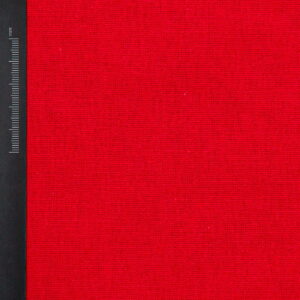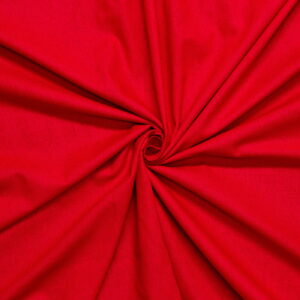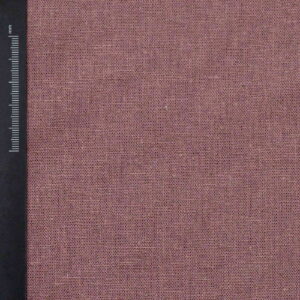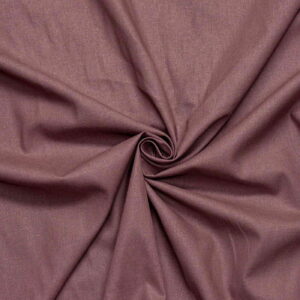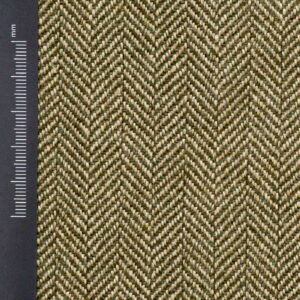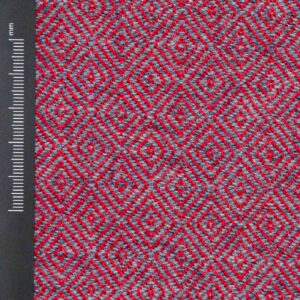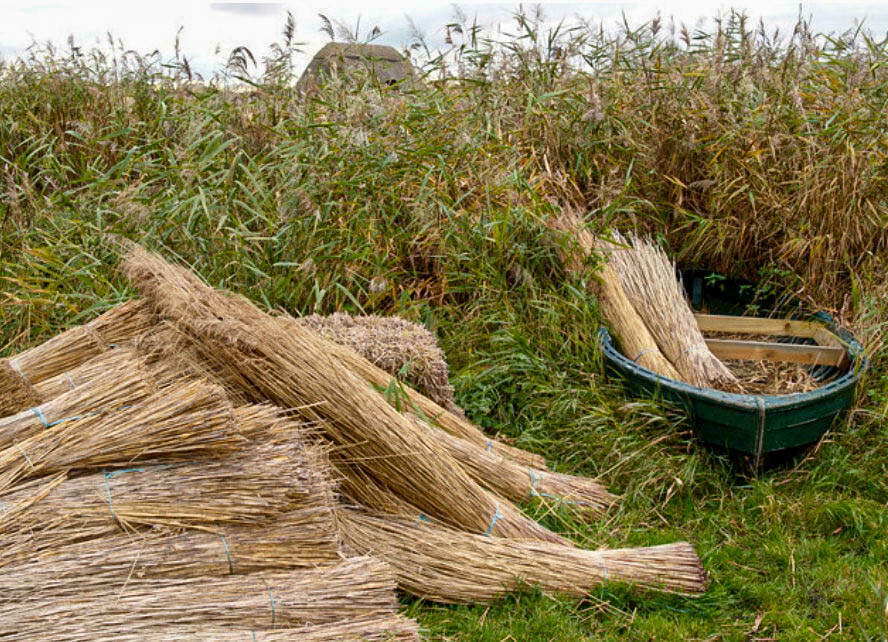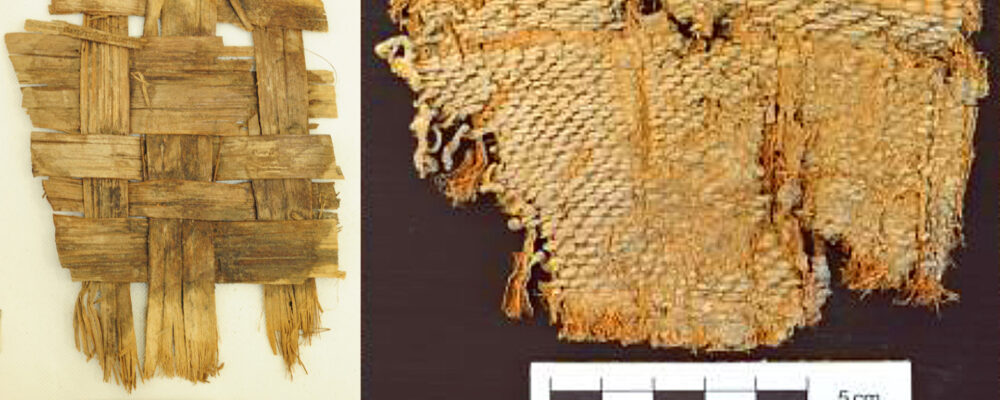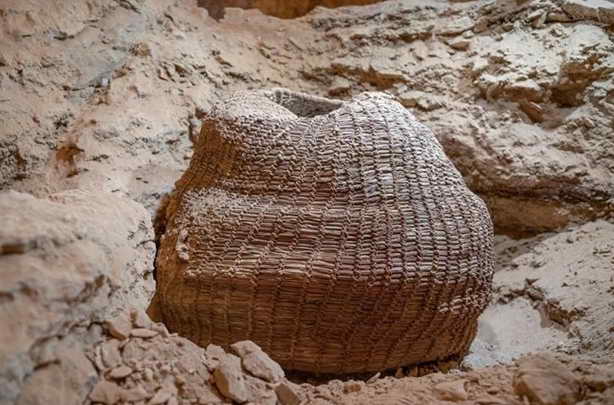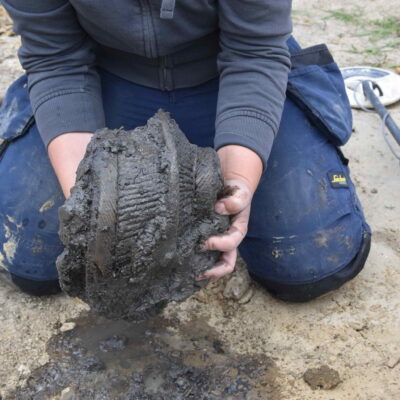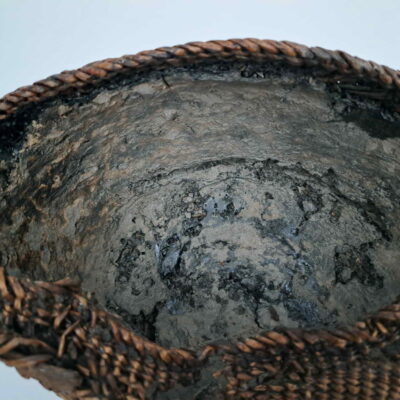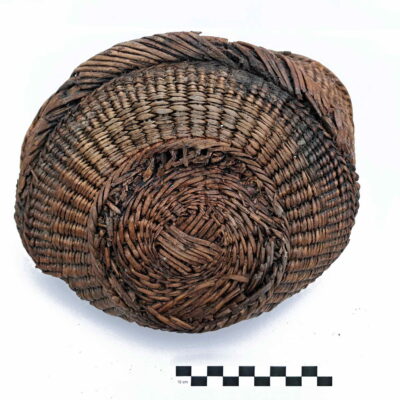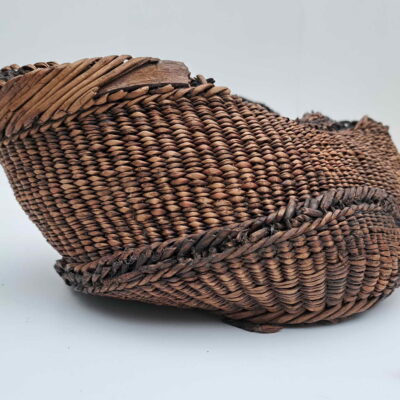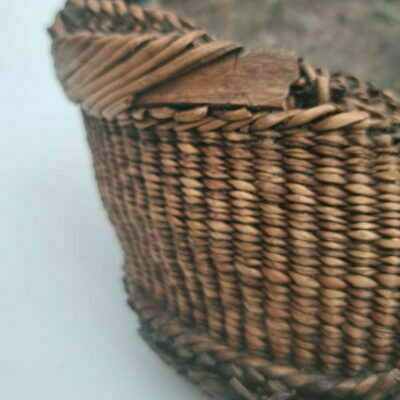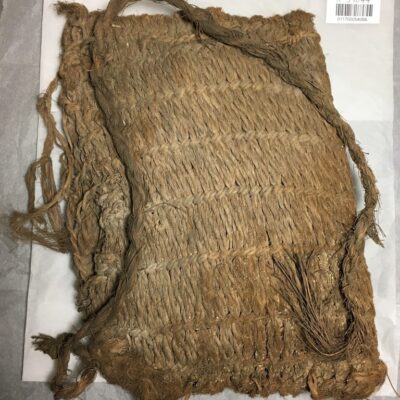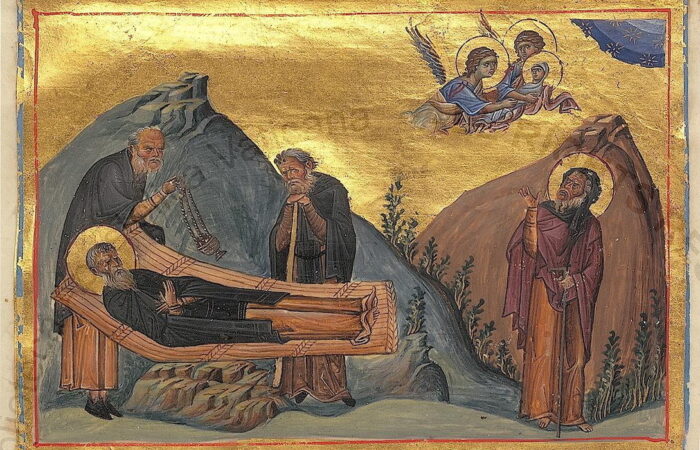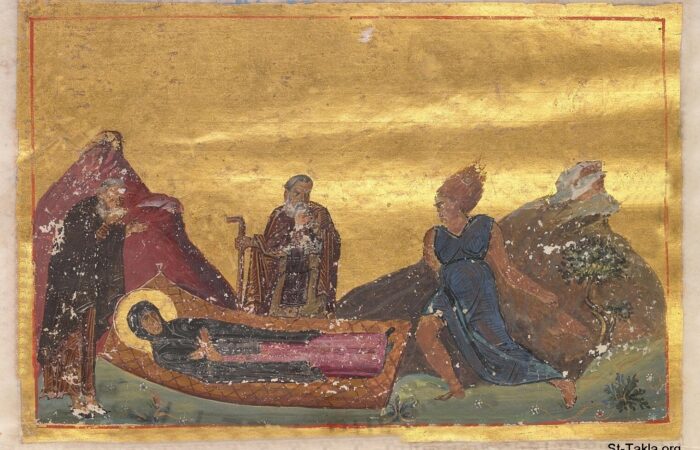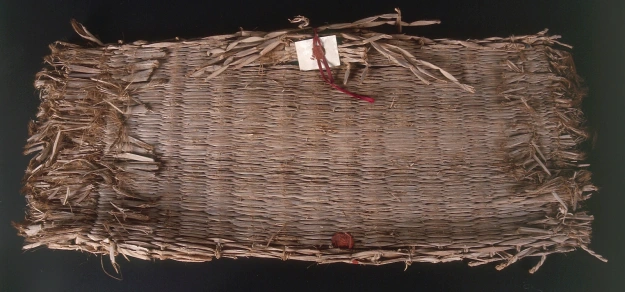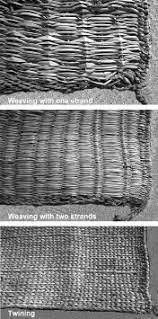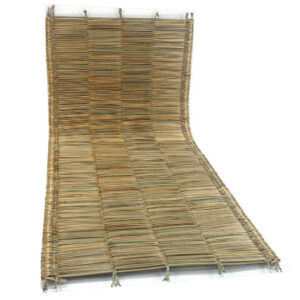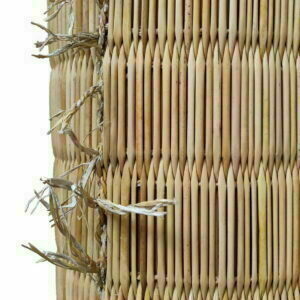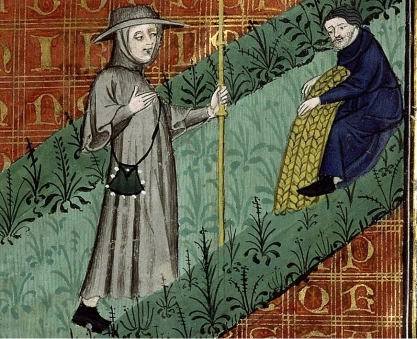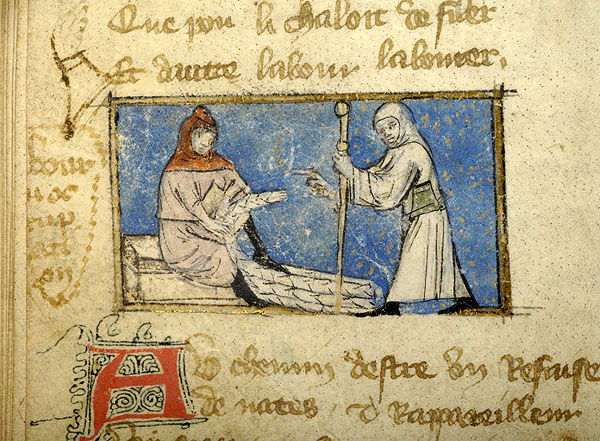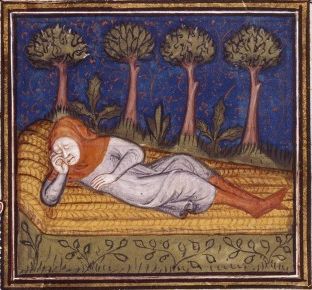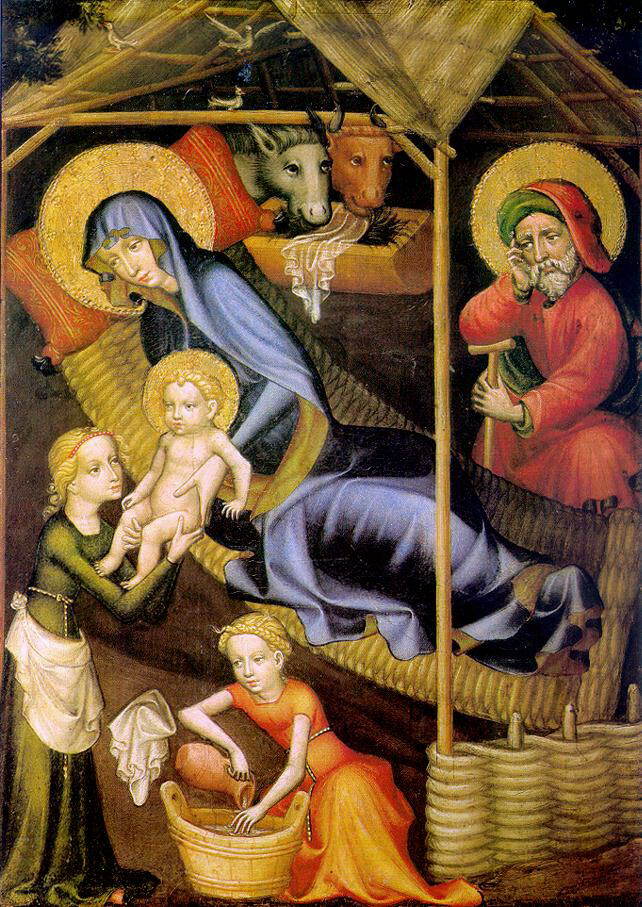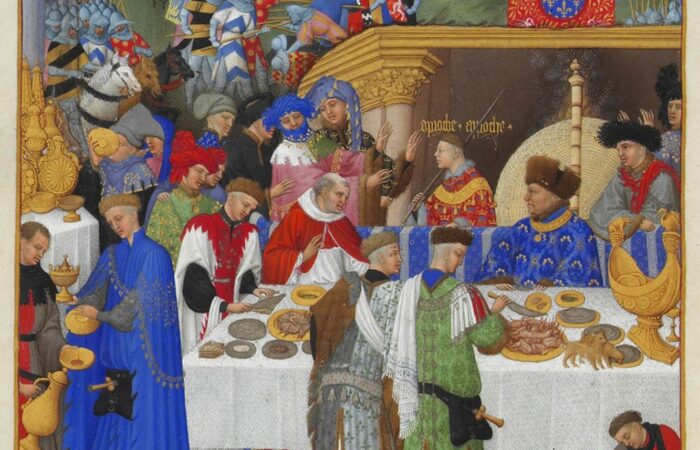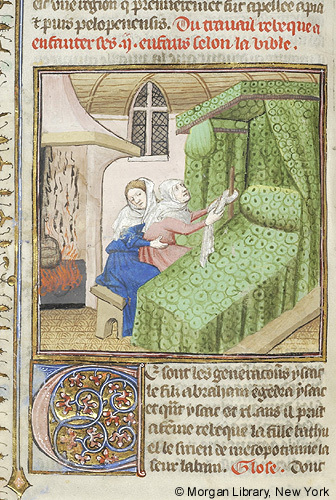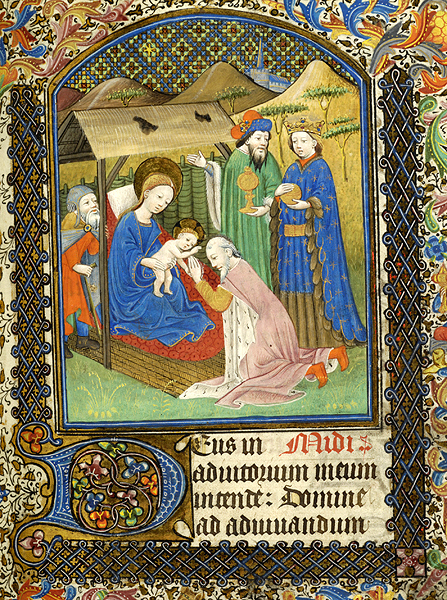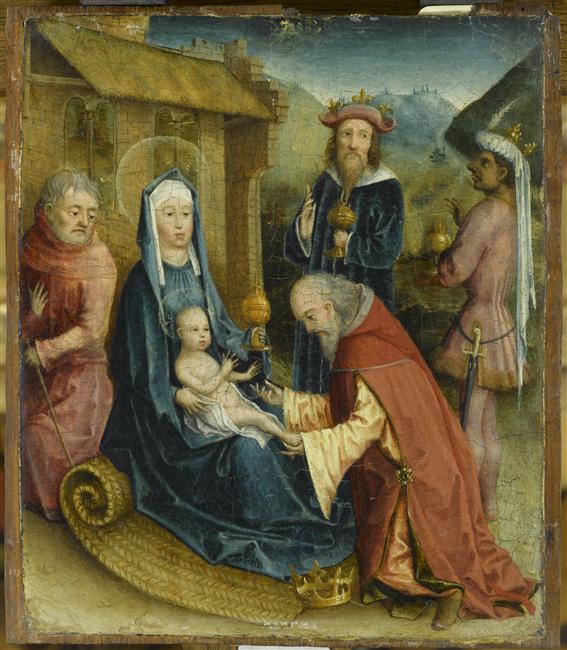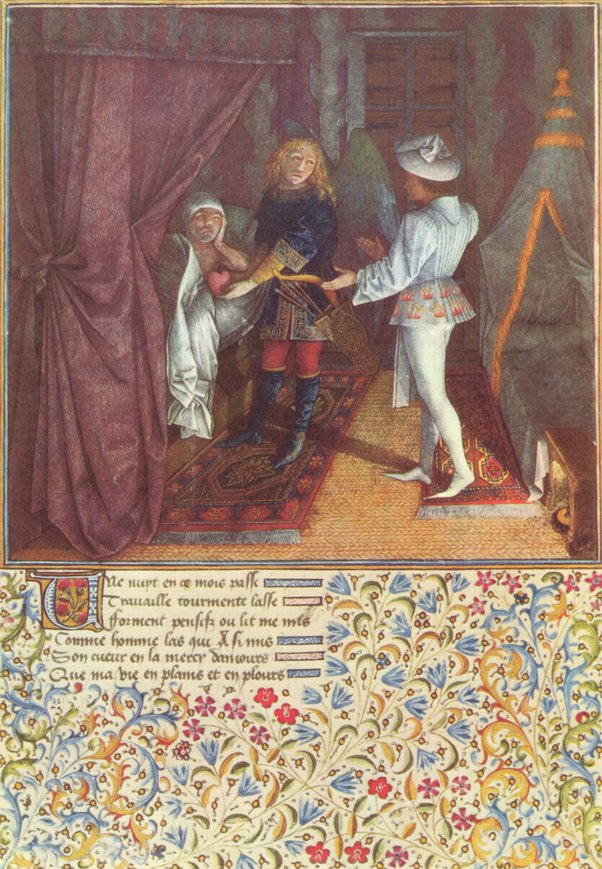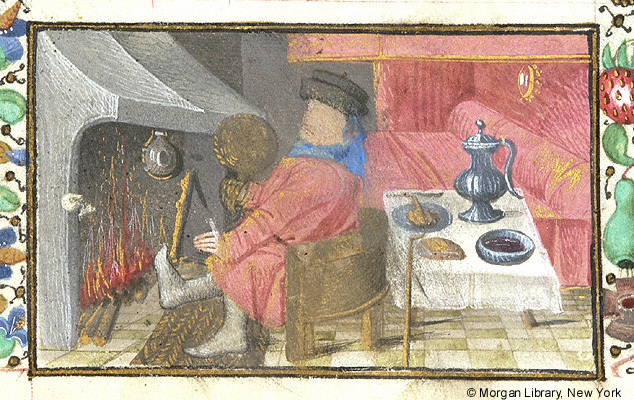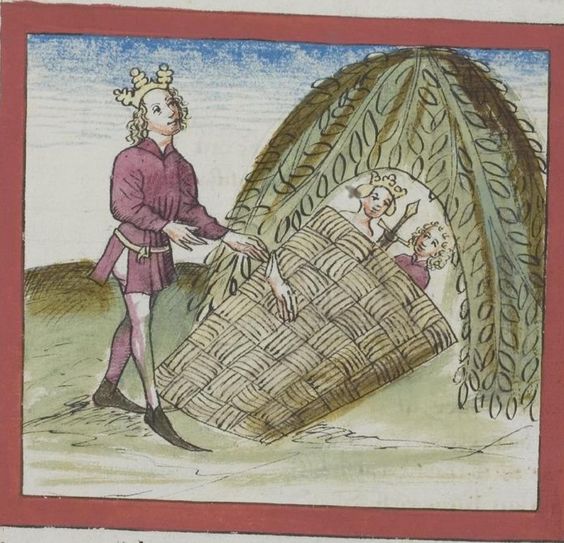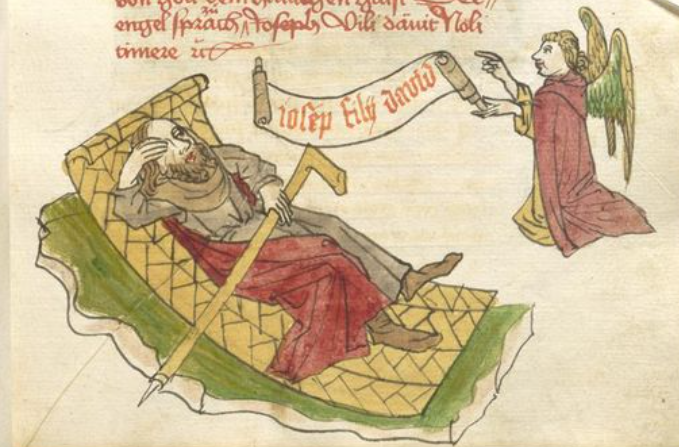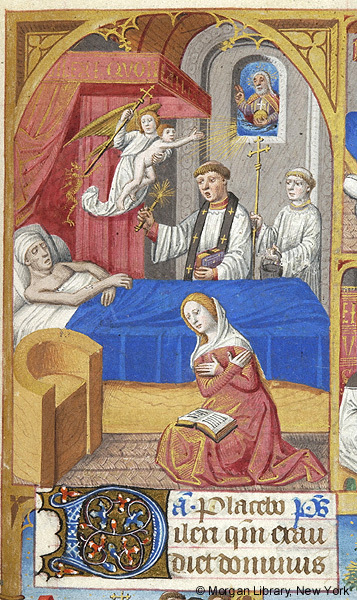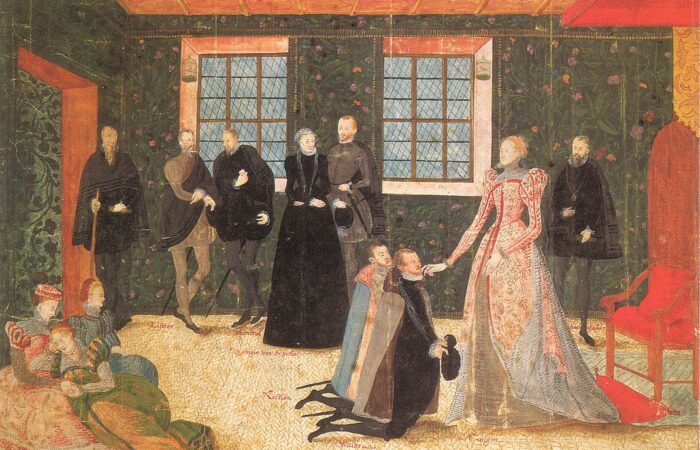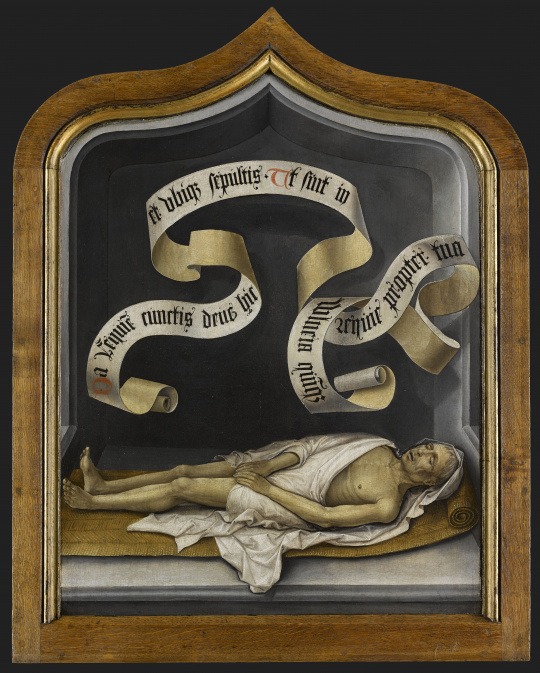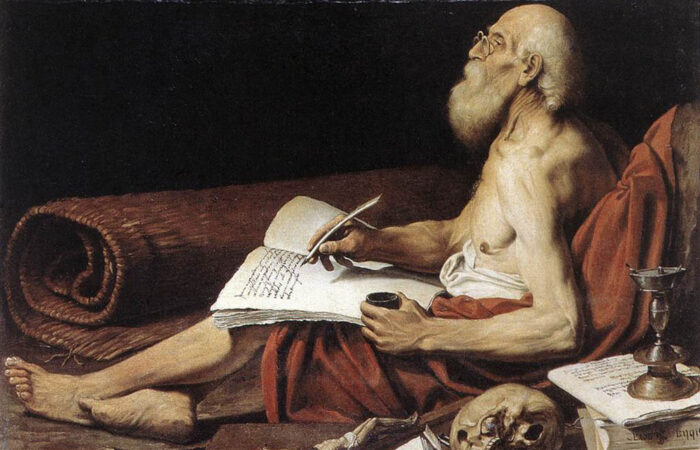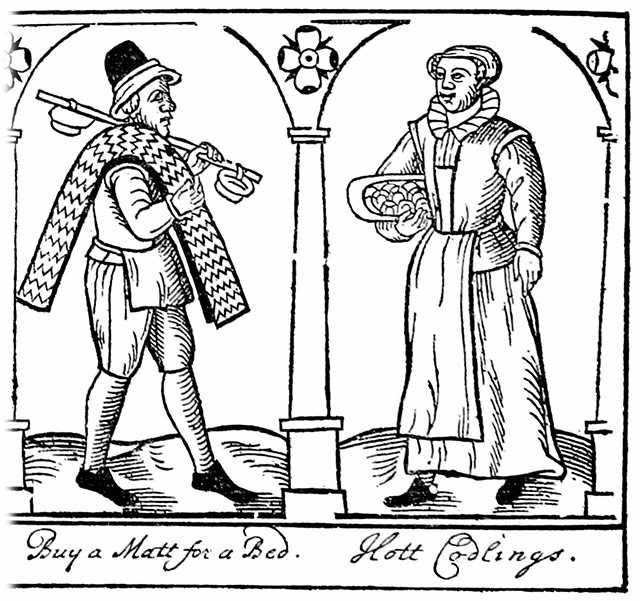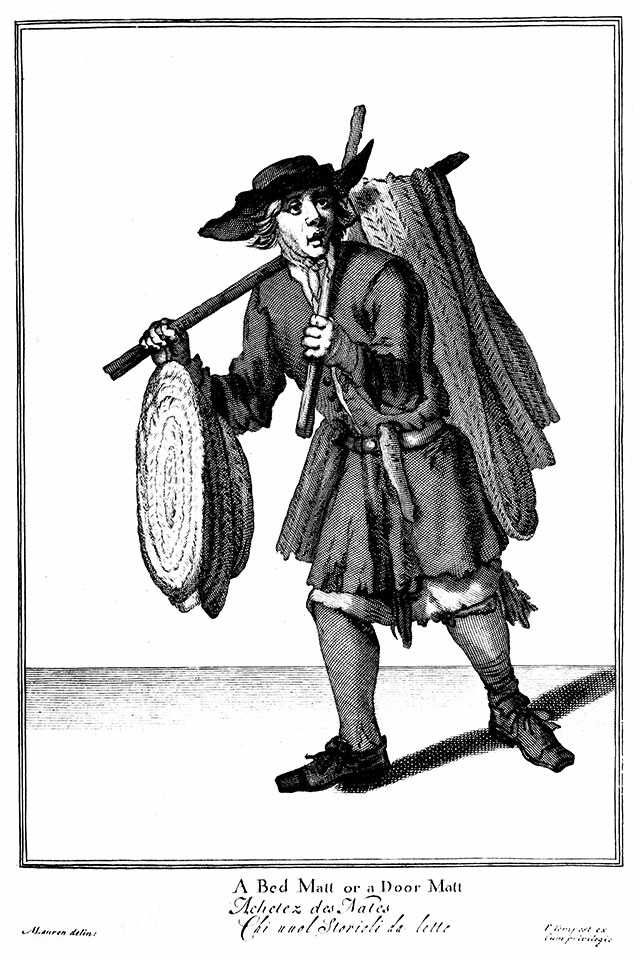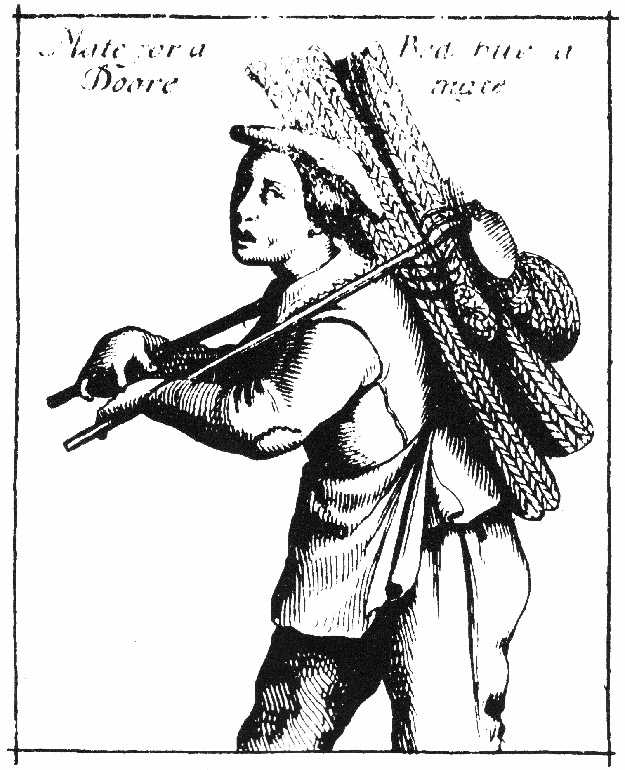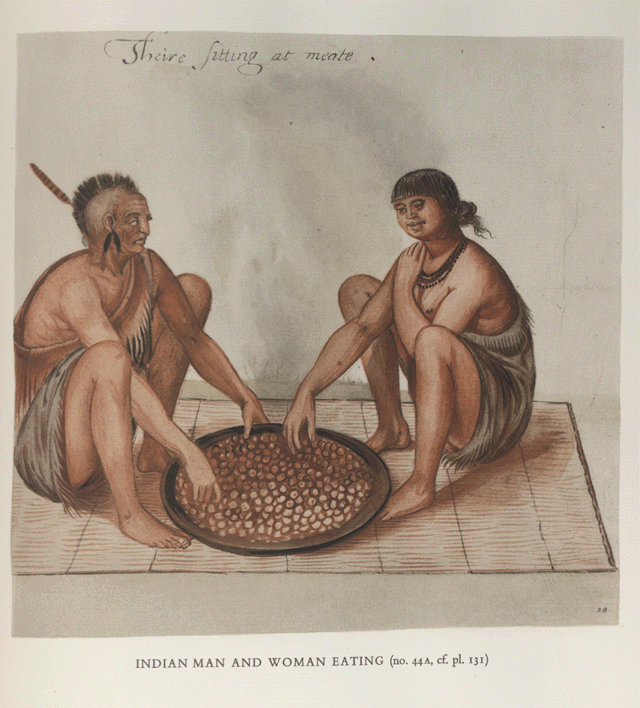Braids of all kinds have been appearing around the world since the end of the Paleolithic. All kinds of plant materials were used to make them, including the creation of light and soft rush mats, as well as wicker fish traps. Today, however, we will focus on the former. How were such mats created and what were they used for over the centuries?
Sea rush - what it is?
Sea rush (Juncus maritimus Lam.) is a plant of the rush family, which naturally occurs in a rather wide band, from the Canary Islands through North Africa to Asia (Afghanistan, Iran, Israel, Turkey, Azerbaijan, Dagestan, Turkestan, Turkmenistan, Uzbekistan), as well as in most of Europe. It has also been found in areas of Poland. It has also been imported into the Americas.
The plant itself grows from 30 to 100 cm in height, the stem is stiff, round and filled with a spongy core, the leaves in the form of hypodermis are stiff and taller than the inflorescences.
What is the difference between the juncaceae family and the cyperaceae family?
The Juncaceae family includes plants with simple leaves and flowers usually clustered in apices forming compound head or panicle inflorescences. The Ciboraceae family includes plants with leaves arranged in triple rows and flowers in the form of spikes. Individual spikes can be clustered into a variety of compound inflorescences – spikelets, panicles or umbels. At first glance, the two families are very similar, moreover, they originate from the same lineage: Clade angiosperms, clade monocots, order panicles (Poales), family rush (Juncaceae). The family is a sister group to the ciboraceae family (Cyperaceae), along with which it forms a sister group to the turnip family (Thurniaceae).
The process of making a rush mat
Rush mats are plait, or rather woven, much like our hand-woven blankets. We can also encounter other types of mats, or rather carpets, which are very popular in England, for example, the Rush Matters offers mats woven from braids made from lakeshore bulrush, which belongs to the sister family of ciboraceae.
The sea rush is harvested first, then sorted by length and dried. Then a warp for the mat is made of twine, which is stretched on a special frame. The dried sea sieve is then woven through the warp, which is five pairs of strings. This creates a distinctive pattern with hollows. Thanks to this structure, the mat is rigid yet flexible and can be easily rolled up.
History of rush matting
The history of rush mats dates back to antiquity. These mats were used by the Egyptians, as well as Europeans and… Native Americans.
Prehistory
Some of the oldest archaeological finds are a mat and basket made of some kind of rush or bulrush (schoenoplectus) found at Huaca Prieta, a site in Peru. These finds have been dated to 10500 BC. The mat, as well as the basket, have two different types of weaves. What’s more, analysis after cleaning revealed that the basket had fibers intentionally dyed blue, probably for decorative purposes.
In 2021, a treasure was discovered in Israel. A basket made of reeds was found in the Judean desert. What was most important about it was that it was found practically intact. This allowed for the exact reproduction of the technique it was made of. The basket has been dated to 8500 BC. This is one of the proofs that rushes, as well as sea rushes, have been used since the dawn of time for all kinds of braids.
Two years ago, Studiebureau Archeologie found a woven basket and a wooden bucket at the Stad Lier site. The two were right next to each other, and were found in the bottom of a Roman well dating to the first century AD. In 2022, they showed the restored monument. When you take a closer look at it, you can see that the basket is not made of wicker, but precisely of some material similar to rush. However, we still have to wait for archaeobotanical analysis.
Antique
The rush itself appears as early as in the Bible. We can find the sea sieve commonly known as rush in several different places, for example: And, behold, out of the Nile came seven cows beautiful and fat, which began to graze among the rushes(Gen 41,2), as well as: Can papyrus grow tall where there is no marsh? Can reeds thrive without water? (Job 8:11).
What’s more, not long after that, in the late 2nd and early 3rd centuries AD, rush mats were used as burial mats. They were found in Kitova Kurchan, which is located near the village of Krushare in Bulgaria.
One of the most interesting exhibits at the Petri Museum of Egyptian Archeology in London is a bag made of sieve. Why is it so important to us? Because, first of all, it is made in a very similar technique as various types of mats from that period. Secondly, its size and workmanship suggest that it was a woven mat, which was then folded in half and sewn on the sides.
This mat corresponds to those found in an Egyptian temple complex in Naqlun (Nekloni), mats made of sea-salt and palm leaves were found in a Christian cemetery dating to the 12th-13th centuries AD. Interestingly, monastic rules also provided for the furnishing of the cells of their monks. Among them, in addition to day and night clothes, items of bedding are mentioned. Among them, “straw mats” or “straw mattresses” often appear; as you can see in the attached photo, these may also have been mats made of rush.
The Middle Ages
In the 10th century, a menologion was compiled for Emperor Basil II of Bulgaria. This manuscript contains a total of 430 miniatures, each taking up half a page, with 16 lines of text alternating below and above them. The included scenes show events of the liturgical year and figures of prophets, saints and martyrs. We are interested in the miniature dedicated to St. Ammon, who lived in the 4th century and spent most of his life in Egypt as an ascetic. The Menologium of Basil II depicts his death and deposition on what looks like a rush mat. Interestingly, later in the Menologium appears a manuscript of Maryna the Monk, a saint of Lebanese origin, who is also laid on some kind of woven mat.
Another medieval monument is associated with St. Bernard of Clairvaux. He lived between 1090 and 1153 and was a Cistercian monk and later abbot of the Clairvaux monastery, famous for spreading the cult of the Virgin Mary and theological treatises. He was canonized in 1174 because of the miracles said to have occurred through his intercession. He is currently the patron saint of: Burgundy, Liguria, Genoa, Gibraltar, Pelplin, Cistercians and beekeepers. He is also an intercessor during natural disasters, storms and at the hour of death. Back. One of his relics is important to us, namely a fragment of the rush mat on which the saint was said to have died.
Buy a mat like this in our store!
Rush Mat
75,00 €| Length | 200 cm |
|---|---|
| Width +/- 2cm | 72 cm |
| Thickness | 15 mm |
| Weight | 2,5 kg |
| Colour We have divided the palette into 11 basic colours. So this attribute is telling about the general, closest colour. For example BLUE : will include all different blue, navy and turquoise shades. This helps while filtering the shop searching for the fabric shade you desire. | Beige , Yellow |
Late Middle Ages
Around 1330, Guillaume de Digulleville, a Cistercian monk who joined the Chaalis Abbey around 1316, wrote The Pilgrimage of Human Life (Le pèlerinage de vie humaine). In the 13,000-line novel, he describes how, after reading Roman de la Rose, he experienced a vision taking him on a spiritual pilgrimage to heavenly Jerusalem. We are interested in two miniatures from this work. The first depicts a man from the south of France making a rush mat (in this case sewn from braids), while the second depicts a pilgrim who presumably intends to spread such a mat before going to sleep.
Another text where we find confirmation of the existence of mats (and their use) is the Book of King Modus and Queen Ratio (Livre du roy Modus et de la royne Ratio). This is a 14th century (circa 1379) hunting treatise, or rather a hunting bestiary. The servants who accompany the royal couple on the hunt ask them questions, Modus answers technical issues, while Ratio presents the spiritual world of animals, beliefs and morals. In one of the miniatures, however, we find King Modus resting during the hunt, lying on a woven rush mat. However, we are unable to determine whether this is a nap during the hunt or, nevertheless, a night’s rest.
As we can see in this example, mats with a similar pattern to those we have in our offer also appear in iconographic sources. In this case, it is a painting by an unknown artist (Austria), made around 1400. It represents the birth of Christ. In the painting we see women taking care of a newborn baby, as well as Mary lying on a mat. Jozew watches over the Holy Virgin, and farm animals in the background.
Moving on. Around 1410, the Very Rich Hours of the Duc de Berry (Les Très Riches Heures du duc de Berry) were compiled. They consist of 206 sheets, decorated with more than 100 illuminations and initials, made by the Limbourg brothers, Barthélemy d’Eyck and Jean Colombe. At the beginning of the hours is a calendar with 12 full-page miniatures. They also include an anatomical man, as well as illustrations for the Gospels. These are followed by illustrations for psalms, hymns, prayers and masses. Our interest is in the New Year’s Day Banquet. People in rich costumes gather around a set table, while woven rush mats are spread on the floor. They appear very often in medieval (and other) manuscripts.
This use of mats is also found in the Historical Bible (La Bible Historiale), the predominant medieval translation of the Bible into French. It translates significant portions of the Bible from the Latin Vulgate, accompanied by selections from Peter Comestor’s Historia Scholastica (d. c. 1178), a literal-historical commentary that summarizes and interprets episodes from the historical books of the Bible and situates them chronologically in relation to an event in pagan history and mythology. On the card dedicated to the birth of Esau and Jacob, we see Rebekah holding a shawl tied to the canopy of the bed and a midwife delivering the baby. Here, too, the floor is lined with rush mats.
In contrast, the 1440 Belgian Hours of the Virgin Mary depicts the Adoration of the Child. This is a scene from the Epiphany, with Mary and Joseph depicted in something resembling a stable, and three wise men paying homage and offering gifts to the child. Two things are interesting about this depiction. The first is a woven fence, which was supposed to be one of the walls of the stable, while the second is a sieve mat, on which is arranged a bed for a mother and child. This may be evidence that such mats were taken with them on expeditions, precisely to secure the bedding during a sleep. A similar mat, but with more details, can be found in the painting L’adoration des mages, by an unknown artist from the same year.
We have further evidence of the use of rush mats as rugs or carpets in Livre du Coeur d’amour épris. This is an allegorical romance, popular at the time, written by King Rene of Andegavia in 1457. The story tells of the Heart (Coeur), kidnapped by the idol of love and entrusted to Desire (Désir). Coeur, as a misguided knight, sets out to find his beloved Doulce Mercy, who is trapped by Denial, Shame and Fear. One of the manuscripts has 16 miniatures, one of which is the visit of the God of Love to King Rene’s chamber. In addition to the remarkable depiction of chiaroscuro in this picture, what is important to us is that the floor of the chamber is lined with woven mats made of sieve, which are covered with richly decorated carpets.
Two other depictions that interest us concern the same thing. The first is from the Hours for the Use of Paris in 1465, and we are interested in the illustration, which was placed in the calendar next to the description of February. In the image we see a man sitting in front of a fireplace and warming his feet or drying his socks. In front of the fireplace is spread a woven mat made of rush. A very analogous illustration can be found in the Hours for the Use of Rome, created in Avignon around 1485-1490. This too is an illustration depicting February.
Eilhart von Oberge is a famous German poet, although he is famous for only one work called Tristan. This is one of the first written and surviving versions of the legend of Tristan and Isolde. The most interesting, however, is the manuscript containing this version of the legend from 1465. We will find in it two illustrations from the part describing the journey of Tristian and Isolde. Both depict people sleeping on the go. In these depictions, we can see a woven mat that serves as a mattress.
Another interesting example of the use of woven mats made of plant materials is the German version of Vita Jesu Christi from 1472. On one of the miniatures we can find a figure resting on a woven mat and probably woken up from sleep by an angel who gave him a message.
The last source from the late Middle Ages is also the Book of Hours for the Use of Paris (Hours of the Virgin, Office of the Dead), this time published between 1485-1490. We are most interested in an illustration depicting one of the sacraments: the last anointing. It is a bedroom scene where a man lies in bed, his soul is taken away by an angel after death, while a priest administers the last anointing. By the bed, on a mat woven from sieve, a woman kneels with a book on her lap and recites prayers.
Modernity
The next source that can make us happy are those from slightly later times, which already belong to the Renaissance. This is the painting English Queen Elizabeth I receives the ambassadors of the Netherlands, a painting by an unknown author. It was created around 1570-1575. This painting depicts the richly decorated interior of the chamber where the Queen receives the mighty Dutch. On the floor, however, is laid a carpet braided with rushes. This is evidence that they were used by all social strata, whether they were mighty men, burghers or rich or even poor peasants.
Another Renaissance source is a painting by Jan Provost. One of his oils on panel depicts St. John the Baptist and a canon, while its reverse has a painted Gisant. It is on it that we see a figure resting on a rush mat, such as has been used as burial mats since the first century. Part of the mat is rolled up under the head, they were used in this way. Because after rolling up part of the mat, we get a rather hard headrest, which can be used as a pillow in camp conditions.
Another interesting source from the Baroque period is a painting by Lionello Spada depicting St. Jerome, painted around 1610. Spada was, among others, a student of Caravaggio, which was reflected in his style, which is characterized by dark colors. In the picture, that you see on the side, we have a depiction of St. Jerome with his most recognizable attributes: writing materials, books, a cross and a skull. However, we are interested in the rolled up mat in the background. This is one of the monk’s mats, made of sea rush, which were used as mattresses. This mat is very similar in performance to those available in our store.
The term “cries” refers to the calls of the itinerant merchants who engaged in street trading. These slogans were supposed to be funny, catchy, and melodic, so that passersby and residents of nearby houses would willingly learn about the assortment and make a purchase. These merchants were specialized and primarily sold a single type of goods or related items. The earliest recordings of them date back to the 17th century. Specifically, from the period between 1620 and 1688, we have the Pepys Collection: The Cries of London (1620), The Manner of Crying Things in London (1640), and The Cryes of the City of London Drawne after the Life (1688). In these three collections, we can find illustrations depicting sellers of sleeping mats and floor mats. As seen in the accompanying drawings, they are likely woven from rush.
Not only Europe
Braids of various types have been appearing since Paleolithic times all over the globe. However, we have evidence that the sea rush, which was carried to various places, was perfectly adapted by the various peoples who made braids. One of these is the painting “Indian Man and Indian Woman” by John White. This is because the couple is sitting on a mat woven in the same way as European mats and eating a meal on it.
Native American ethnography has brought us evidence that they made mats identical to European mats, except that they used plants native to the Americas, such as Schoenoplectus or Cyperus. For example, women of the Ottawa tribe wove such mats used as part of religious worship, and after adopting Christianity they also made such mats as altar tablecloths for churches.
Different weaving patterns
As could be seen above, there were many different weaving patterns used in rush mats production process.
It all depended on the pusrpose of the mat. In particular, those that were to be used on the floor for walking, dancing or even keeping legs by the home fireplace required a weave that guaranteed greater resistance to abrasion. These kind of mats were stiff and heavy.
In our case, we had to choose a weave that gives a lightweight product that can be rolled up nicely, mainly because our mats are dedicated to camp life. We wanted them to be rolled up and packed like a sleeping mat. Thanks to this, they can be freely taken with you on a trip to re-enactment event, as well as in the field, as part of survival and bushcraft equipment. Such mats will be perfect both for people who practice traditional bushcraft and for marching in different eras – especially since you will have sources for them!
Rush mats - what can they be used for?
Analyzing historical and iconographic sources, it is possible to delineate several (quite extreme) uses of all kinds of mats from the rush. They can be used as:
- all kinds of carpets, rugs and doormats,
- tablecloths, table mats, mats used as a placemat while eating,
- mattresses and additional insulation between the bed and sheets or fur,
- portable mats that served as mattresses or any kind of insulator from the ground.
How to take care of a rush mat?
Rush mats like any plaits made of dried fibers do not like moisture. Therefore, it is important to avoid getting them wet. While ordinary everyday moisture will somehow not be very harmful, getting it wet during a downpour can already be a problem. It is best to properly shake out such a mat after each use, dry it in the sun away from heat sources (for example, campfires). In the case of more severe dirt, we recommend brushing it with a fairly stiff brush.
Convinced? Buy a mat now!
Rush Mat
75,00 €| Length | 200 cm |
|---|---|
| Width +/- 2cm | 72 cm |
| Thickness | 15 mm |
| Weight | 2,5 kg |
| Colour We have divided the palette into 11 basic colours. So this attribute is telling about the general, closest colour. For example BLUE : will include all different blue, navy and turquoise shades. This helps while filtering the shop searching for the fabric shade you desire. | Beige , Yellow |



